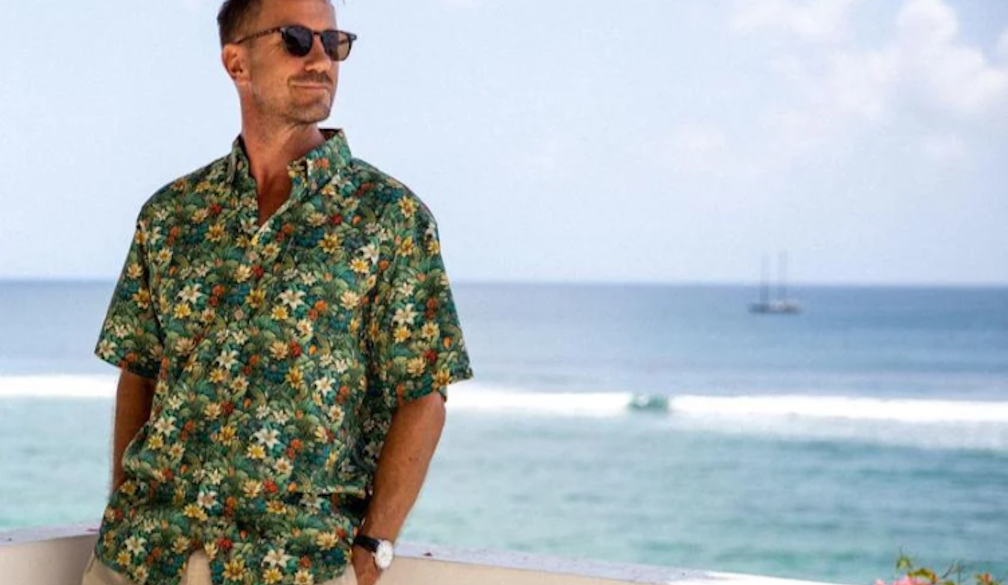The Hawaiian Shirt's Evolution from Island Wear to a Global Trend

The Hawaiian shirt, known for its vibrant patterns and breezy material, has transitioned from being a simple island attire to a globally recognized fashion trend. This journey from the shores of Hawaii to the fashion capitals of the world embodies a fascinating story of cultural exchange, fashion innovation, and the universal desire for a relaxed lifestyle.
Origins and Cultural Significance
Originating in the 1930s in Hawaii, the Hawaiian shirt, or "Aloha shirt," was initially designed to cater to tourists who wanted to bring a piece of the island's charm back home. These shirts featured patterns inspired by the natural scenery of Hawaii and traditional motifs, using bright colors and intricate designs. Locally, they were more than just tourist souvenirs; they symbolized the casual and friendly approach of Hawaiian culture.
Mainstream Acceptance in the U.S
Post-World War II America saw significant changes in fashion as soldiers returning from the Pacific brought Aloha shirts to the mainland. The Hawaiian shirt gained popularity particularly in the 1950s when celebrities like Elvis Presley and later, Tom Selleck in Magnum, P.I., donned these shirts, showcasing them on global platforms. This endorsement by pop culture icons helped the Hawaiian shirt transcend its tourist souvenir status, making it a symbol of leisure and relaxation across America.
Global Spread and Adaptation
As international travel became more accessible and popular culture increasingly globalized, the Hawaiian shirt found its way into wardrobes around the world. It began to appear in summer collections of major fashion brands, further cementing its status as a staple of casual wear. Notably, the design and fabric of Hawaiian shirts have been adapted to blend with various cultural elements, reflecting local tastes and fashion trends while maintaining its distinctive tropical aesthetic.
Fashion Industry’s Embrace
The fashion industry’s embrace of the Hawaiian shirt is evident in its presence on high-fashion runways and in streetwear collections alike. Designers have reinterpreted the classic Hawaiian shirt with modern cuts, sometimes integrating high-tech fabrics and minimalist prints, thus broadening its appeal beyond its traditional base. This has allowed the Hawaiian shirt to maintain its relevance in the fast-paced world of fashion, appealing to a younger, fashion-forward audience.
Symbol of Relaxation and Resistance
Interestingly, the Hawaiian shirt has also evolved into a symbol of resistance against the rigidity of traditional business attire. In the tech industry, for example, where informal dress codes often prevail, the Hawaiian shirt can express individuality and a non-conformist attitude. Its adoption in such environments speaks to its enduring appeal as a symbol of a laid-back, yet distinctly intentional lifestyle.
Sustainability and the Modern Consumer
Today, the resurgence of the Hawaiian shirt is also tied to the growing trend of sustainability in fashion. Many consumers now look for clothing that offers both style and a sustainable backstory. Ethical fashion brands have responded by producing Hawaiian shirts from organic fabrics, using eco-friendly dyes and supporting local artisans, thus aligning with the values of contemporary consumers.
The Hawaiian shirt’s journey from a regional novelty to a staple in global fashion is a testament to its versatility, appeal, and adaptability. Its story is intertwined with historical trends, shifts in cultural attitudes, and the evolving dynamics of fashion. Today, the Hawaiian shirt is not just a piece of clothing; it is a global icon that embodies the spirit of relaxation, cultural openness, and sustainable fashion. Its continued evolution will likely offer new insights into the relationship between regional traditions and global fashion trends.







